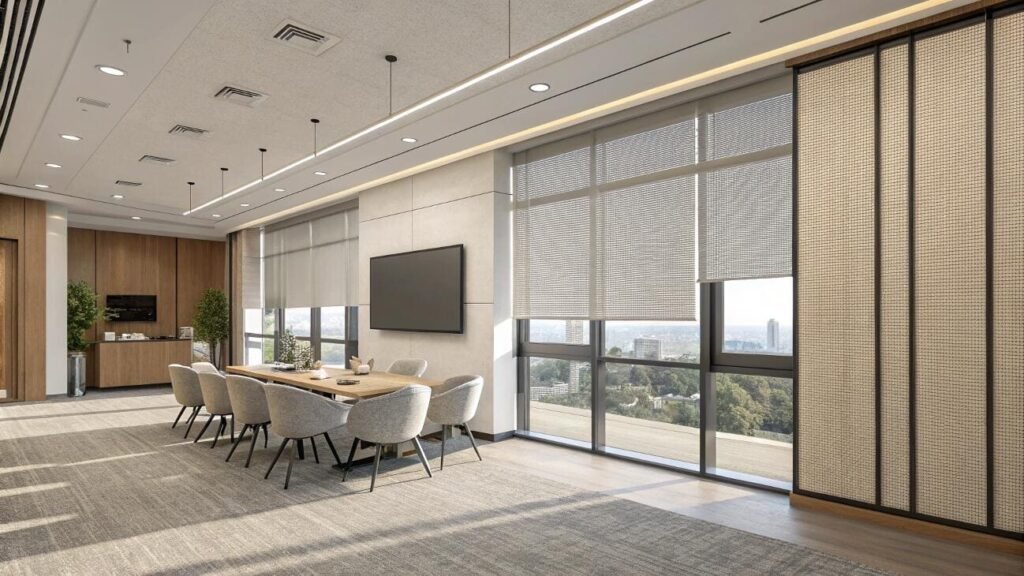Staring at a technical data sheet full of percentages and acronyms? Specifying the wrong fabric can lead to client complaints about glare, heat, or a lack of privacy.
To read blind specifications, focus on the ‘openness factor’ for light and view, and the solar performance ratings (Tv, Rs, As) for heat control. A lower openness percentage means less view but more privacy and UV protection, a crucial trade-off in modern design .

As a supplier, I’ve seen many project managers get lost in the technical details of solar fabrics. The truth is, these numbers are your most powerful tool for ensuring a project’s success. They tell you exactly how a blind will perform in the real world. In this guide, I will demystify these specifications. I’ll translate the technical jargon into practical knowledge so you can select the perfect fabric for any environment, balancing view, heat control, and privacy like a seasoned expert.
What is the openness factor of blinds and how does it affect light control?
You see "openness factor" on every spec sheet, but what does it actually mean for the user? Choosing the wrong percentage can leave a room too dark or too exposed.
The openness factor (OF) is the percentage of a solar screen fabric’s surface area that is open space. A lower number means a tighter weave and less light, while a higher number means a more open weave, providing more light and a clearer view .
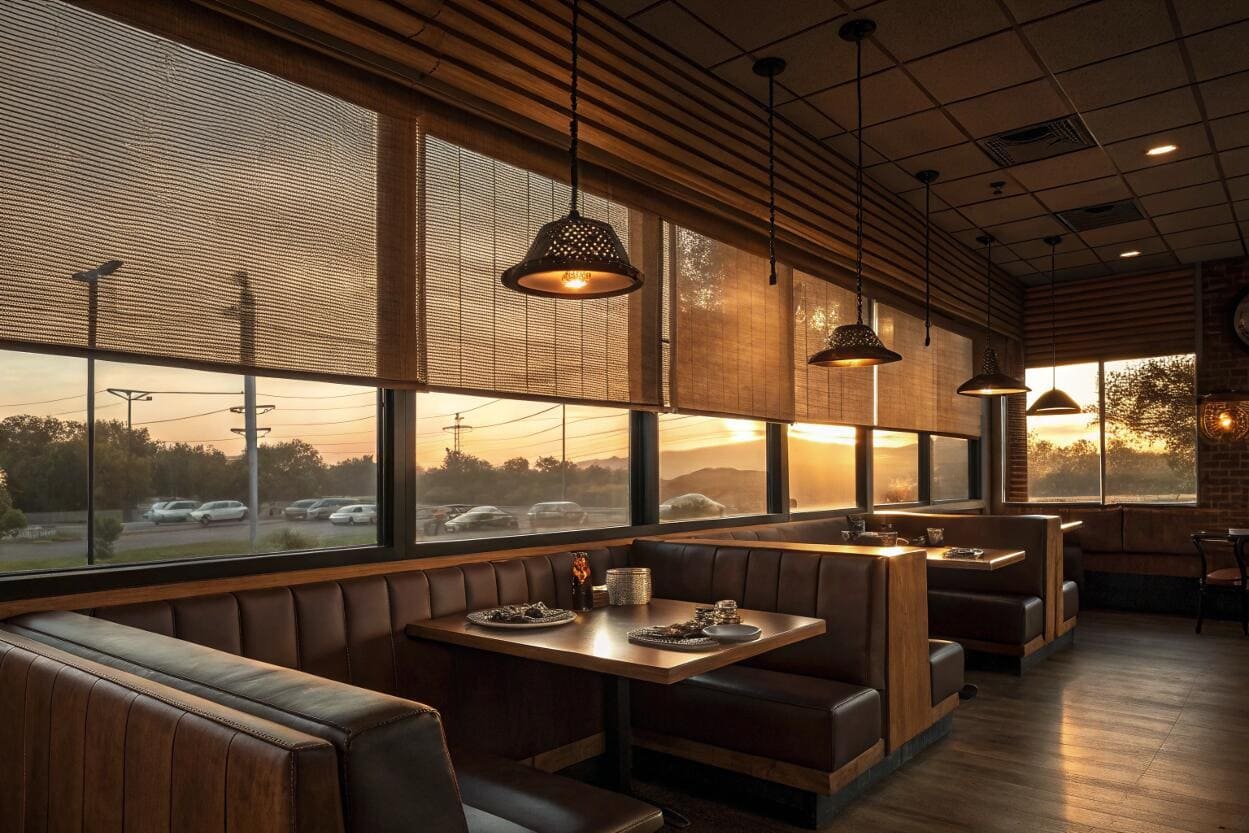
Think of the openness factor as the density of the fabric’s weave. It’s a precise measurement of how much you can see through it, and it directly controls the balance between the view to the outside and the amount of natural light and glare that enters the room.
Here is a simple breakdown I use to help my partners visualize the effect :
- Low Openness (1-3%): This is a very tight weave. It significantly cuts down on glare and heat, providing substantial daytime privacy[^1]. The view to the outside is present but muted. This is ideal for spaces where screen visibility (like offices or media rooms) is critical or where sun exposure is intense.
- Medium Openness (3-5%): This is often considered the "sweet spot" for many applications. It offers a good balance, providing clear views out, effective glare reduction, and reliable daytime privacy . It’s a versatile choice for lobbies, common areas, and general office spaces.
- High Openness (7-14%): This is a very open weave. It’s designed to maximize the view and preserve as much natural light as possible. While it offers some glare and heat reduction, privacy is minimal. This is best for spaces where the view is the main attraction and direct sun is less of an issue, like north-facing rooms or top-floor cafes.
Understanding this single metric is the first and most important step to specifying the right solar screen fabric.
How to read and interpret Tv%, As%, Rs%, and Ts% ratings on blind specifications?
Moving beyond openness, you see a jumble of letters: Tv, As, Rs, Ts. Are these just confusing acronyms? They are the key to predicting a fabric’s thermal performance and energy efficiency.
These ratings represent how solar energy interacts with the fabric. Tv is Visible Light Transmittance[^2] (glare control), Rs is Solar Reflectance (heat reflection), As is Solar Absorptance[^3] (heat absorption), and Ts is Solar Transmittance (heat pass-through).
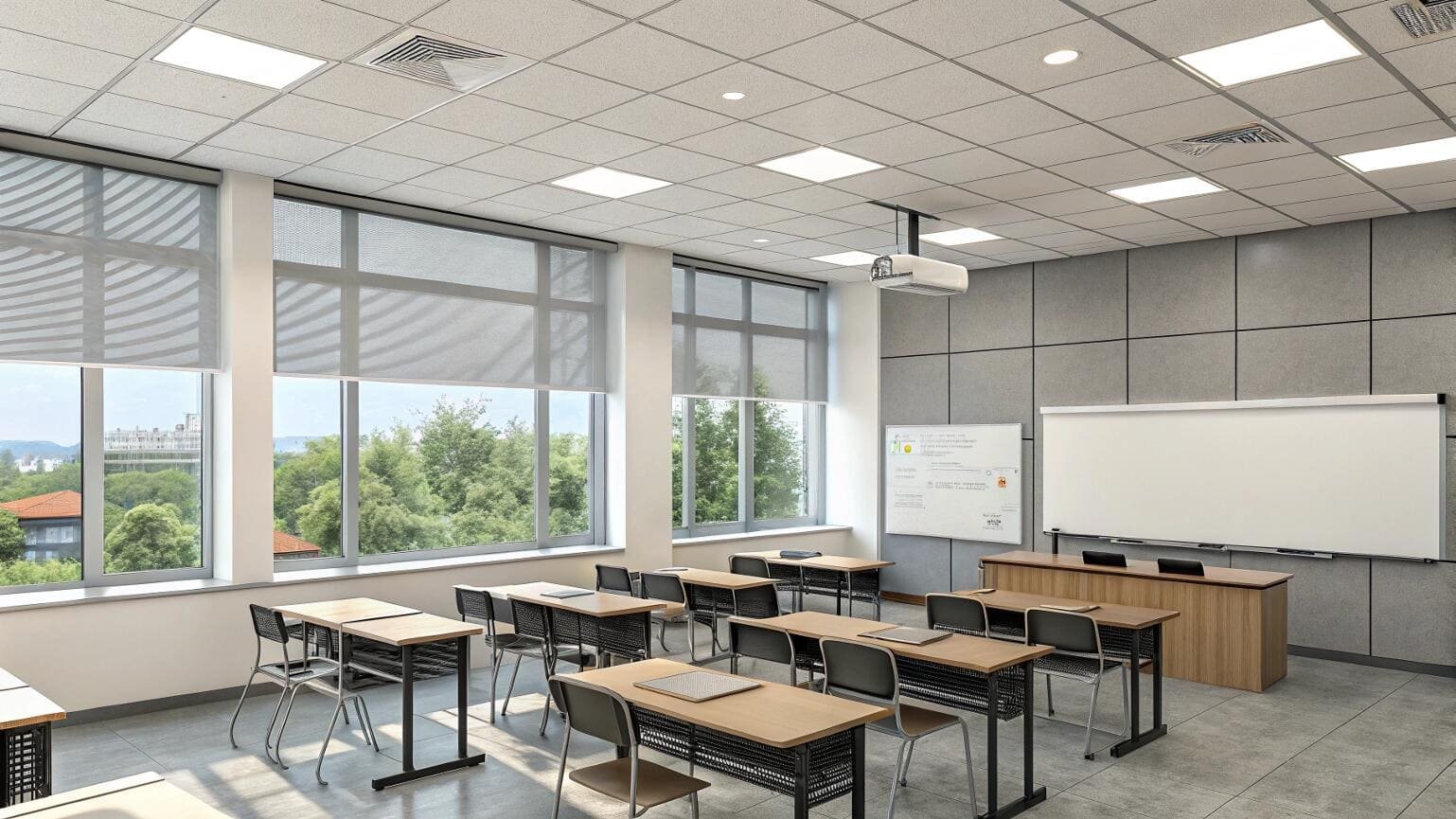
When I work with an architect or energy consultant, this is the data we focus on. Together, Rs + As + Ts = 100% of the solar energy hitting the blind.
Here’s how to interpret them for your projects:
| Rating | Stands For | What it Means for Your Project | Ideal Value |
|---|---|---|---|
| Rs | Solar Reflectance | The percentage of solar energy reflected away from the window. This is the most important number for heat control. | High Rs. A higher number means less heat enters the space. Light-colored and metallized fabrics have higher Rs values . |
| As | Solar Absorptance | The percentage of solar energy absorbed by the fabric itself. This heat either radiates back into the room or is convected away. | Low As. Darker fabrics absorb more heat, which can be useful for passive heating in colder climates but is generally undesirable for cooling efficiency . |
| Ts | Solar Transmittance | The percentage of solar energy that passes directly through the fabric’s open spaces. | Low Ts. This is directly related to the openness factor. A lower openness factor will mean a lower Ts value. |
| Tv | Visible Light Transmittance | The percentage of visible light that passes through. This is essentially a more technical way of defining glare control. | Varies. A low Tv is needed for media rooms or computer-heavy offices. A higher Tv is nice for lobbies where you want bright, natural light. |
For a south-facing office in a hot climate, you would specify a fabric with the highest possible Rs (Solar Reflectance) to maximize energy savings .
What is the difference between 5% openness and 10% openness in solar fabrics?
The numbers seem close, but the real-world impact is significant. Specifying 10% where 5% was needed can lead to an entire floor of employees complaining about screen glare.
A 5% openness fabric offers a good balance of view and privacy with ~90% heat reduction. A 10% openness fabric prioritizes a clearer, sharper view but offers only moderate privacy and less heat reduction, around 85% .
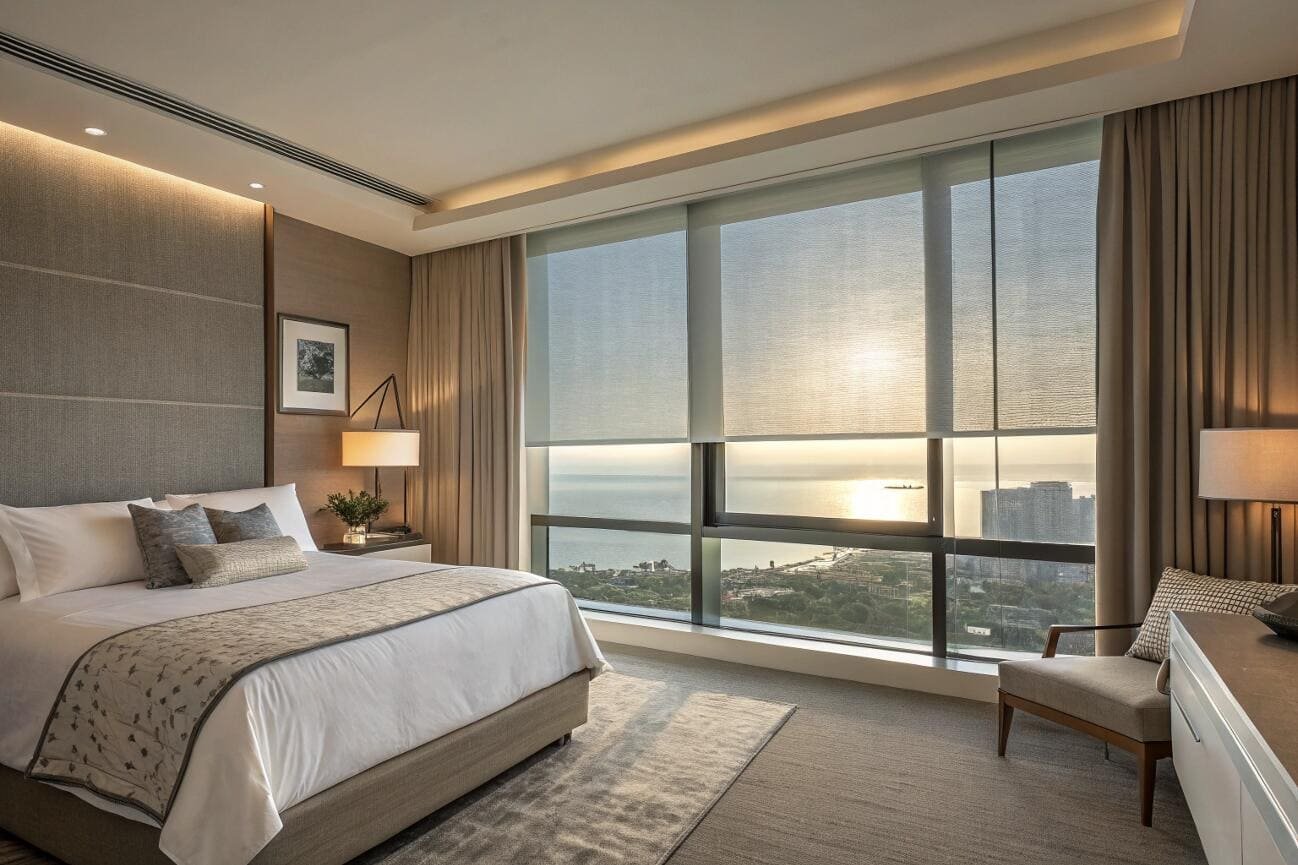
The choice between these two popular options comes down to one key question: What is the primary function of the window in that space? I use this comparison table with clients to make the decision clear .
| Feature | 5% Openness Fabric | 10% Openness Fabric | Project Recommendation |
|---|---|---|---|
| View Clarity | Good, defined view. Objects are clear but the overall scene is softer. | Excellent, crisp view. Feels more like looking through a lightly tinted window. | Winner: 10% (If view is the top priority). |
| Glare Control | Excellent. Significantly reduces glare on screens and work surfaces. | Moderate. Reduces the worst glare, but can still be too bright for sensitive tasks. | Winner: 5% (For any office or task environment). |
| Daytime Privacy | High. It is difficult to see into the building from the outside during the day. | Moderate. Shapes and movement can be more easily discerned from the outside. | Winner: 5% (For ground-floor spaces or sensitive offices). |
| Heat Reduction | ~90% | ~85% | Winner: 5% (For better energy efficiency). |
For a standard commercial office building, a 3% to 5% openness factor is almost always the correct specification. It provides the effective glare control needed for a productive work environment. I reserve 10% or even 14% openness for spaces like restaurants or lobbies where preserving the vista is the most important goal.
How do fabric color and openness factor work together to optimize blind performance?
You’ve chosen your openness factor, but now you need to pick a color. Did you know that a dark and light fabric with the same 3% openness[^4] will perform completely differently?
Dark fabrics provide superior glare control and a clearer view to the outside. Light fabrics are better at reflecting heat and provide more diffused ambient light. The best choice depends on whether the priority is managing glare or reducing heat gain.
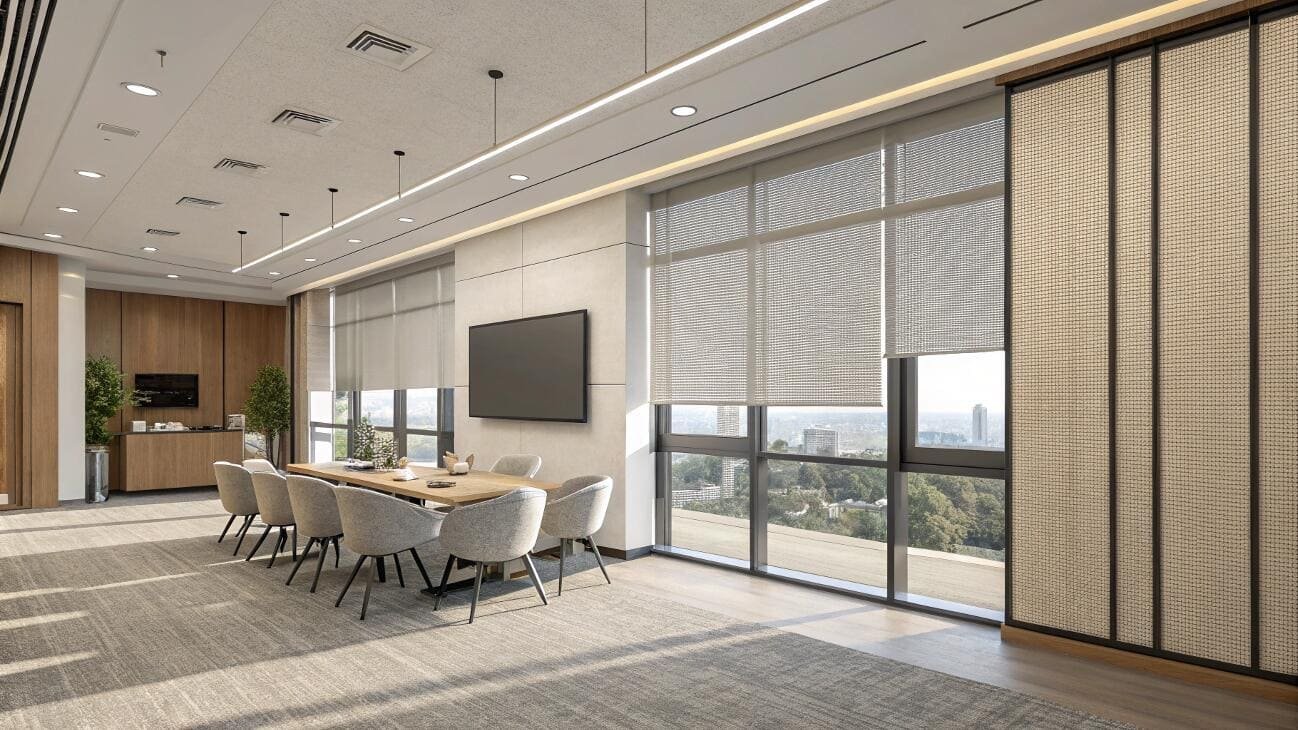
This is a crucial concept that I spend a lot of time explaining to designers. The color of the fabric works with the openness factor to fine-tune the performance of the blind. Think of it like a pair of sunglasses: grey lenses make the world look crisp and clear, while mirrored lenses reflect the sun away.
Here’s how to think about the two main choices :
-
Dark Color (e.g., Charcoal, Black, Bronze) + Low Openness (1-3%):
- Effect: This combination acts like high-quality sunglasses. It cuts glare dramatically and, because your eye is drawn to the brighter space outside, the view appears exceptionally clear and sharp.
- Downside: Dark fabrics have a low Solar Reflectance (Rs) and high Solar Absorptance (As). They absorb solar energy, get warm, and radiate that heat into the room.
- Best For: Offices with heavy computer use, boardrooms, and any space where glare control and view clarity are the top priorities.
-
Light Color (e.g., White, Beige, Light Grey) + Low Openness (1-3%):
- Effect: This combination acts as a powerful heat shield. The light color provides a very high Solar Reflectance (Rs), bouncing a huge amount of solar energy back out the window before it can become heat.
- Downside: The view can appear "milky" or washed out, as your eye is drawn to the bright surface of the fabric itself. It can also create more diffuse, ambient light in the room.
- Best For: South-facing facades, buildings in hot climates, and any project where maximizing energy efficiency and reducing HVAC load is the primary goal . A fabric with a metallized backing offers the highest reflectance of all .
What performance ratings are essential for different commercial environments?
Specifying blinds for a hospital is very different from specifying for a hotel lobby. Each commercial space has a unique set of non-negotiable performance requirements dictated by function and safety codes.
For all commercial spaces, fire retardancy certification (like NFPA 701 or B1) is essential. Healthcare requires anti-microbial and easily sanitized surfaces. Offices need superior glare control[^5] (low Tv). Hospitality needs a balance of aesthetics and durability[^6] .
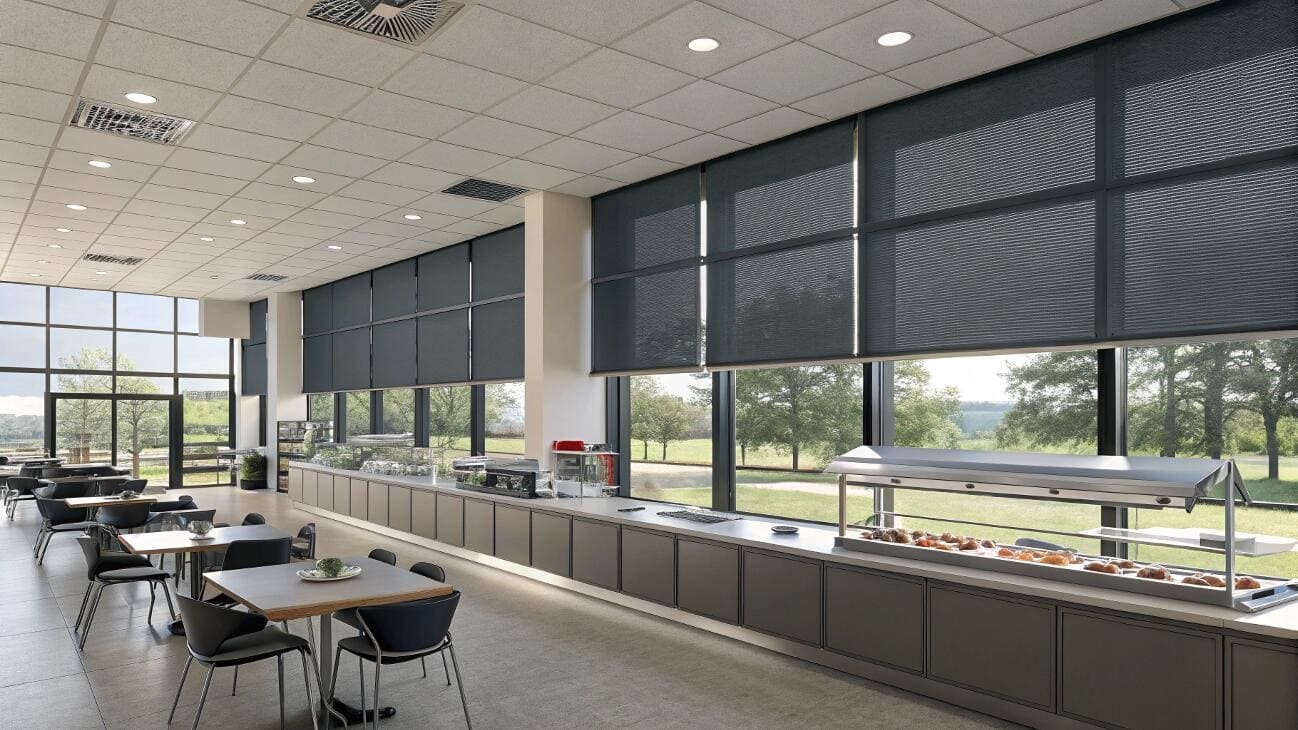
As a supplier, my job is to ensure the fabric specified meets all the functional and legal requirements of the space. We often start with the environment and work backward to the fabric solution.
Here is a quick reference guide I use with project buyers:
| Environment | Essential Performance Ratings & Features | Recommended Fabric |
|---|---|---|
| Corporate Office | Glare Control: Low Tv (Visible Transmittance). View Clarity: Low openness (3%-5%) dark colors. Durability: High-quality, anti-static materials . | 3% Openness Solar Screen (Charcoal) |
| Healthcare / Labs | Hygiene: Anti-microbial, non-porous, easily sanitized. Fire Retardancy: NFPA 701, BS5867, or B1 certified . | PVC-Coated Fiberglass or Polyester |
| Hospitality (Hotels) | Room Darkening: Blackout or dual roller systems for guest rooms . Durability: High cycle-life, easy to clean fabrics . Aesthetics: Wide range of colors and textures. | Dual Roller System: 5% Solar Screen + Blackout Fabric |
| Education (Schools) | Durability: Tear-resistant, stable composite fabrics . Maintenance: Easy to wipe clean. Safety: Cordless or motorized operation . | 5% Openness PVC-Coated Polyester |
By prioritizing these essential ratings, you ensure the blinds are not just decorative elements but functional assets that contribute to the safety, comfort, and efficiency of the commercial space.
Conclusion
Reading a blind specification sheet is no longer a mystery. By understanding openness factor, solar ratings (Rs, As, Ts), and the interplay of color, you can specify window treatments with the precision of an engineer, ensuring optimal performance and client satisfaction.
Get Expert Help with Your Project Specifications
Feeling overwhelmed by the data? Let us help you translate your project’s needs into a precise fabric specification. Contact me for detailed technical data sheets, fabric samples, and expert guidance. Email us at info@velablinds.com.
Extended FAQ Section
People also ask
What does 3% openness mean for privacy at night?
The openness factor rating is primarily for evaluating daytime performance. At night, when lights are on inside and it’s dark outside, the effect reverses. For any solar screen fabric, including 3% openness, people outside will be able to see clearly into the illuminated space. For this reason, solar screens are not considered privacy blinds for nighttime use. For spaces requiring 24/7 privacy, such as hotel rooms or ground-floor boardrooms, I always recommend a dual roller system that pairs a daytime solar screen with a separate, fully opaque blackout fabric .
Is a fabric with 1% openness considered a blackout blind?
No, a 1% openness solar screen is a "room darkening" fabric, but it is not a true "blackout" fabric. While it blocks 99% of the light, the 1% of openings will still allow pinpricks of light to filter through, creating a "starry night" effect. Furthermore, light will leak around the sides of the blind. A true blackout fabric is completely opaque with an openness factor of 0% and is designed to block 100% of light from passing through the material itself .
How do you validate the performance data a manufacturer provides?
For professional projects, you should always request third-party testing reports to validate performance data. Fire retardancy claims must be backed by certificates from recognized labs showing compliance with standards like NFPA 701 (for the US) or BS 5867 (for the UK). Health and safety certifications like OEKO-TEX 100 ensure the fabric is free of harmful substances . Reputable suppliers should be able to provide this documentation transparently, giving you and your client confidence in the specified product’s performance and safety.
---
[^1]: Discover how the right fabric can ensure privacy without sacrificing light.
[^2]: Learn how Tv affects glare control and natural light in your environment.
[^3]: Understanding As helps in choosing fabrics that manage heat effectively.
[^4]: Discover why 3% openness is often the ideal choice for commercial offices.
[^5]: Find effective strategies to minimize glare and enhance productivity in workspaces.
[^6]: Discover the balance between style and functionality in hospitality fabrics.Partner with VelaBlinds for Your Next Project
Smart window treatments shouldn’t be complicated. After working with 500+ distributors and contractors worldwide, I’ve streamlined the process to get you quality products, competitive pricing, and reliable support – every time.
Why project professionals choose VelaBlinds:
- ✅ Fast, Accurate Quotes – Detailed specs and pricing within 24 hours
- ✅ Transparent Pricing – No hidden fees, volume discounts clearly outlined
- ✅ Quality Assurance – Direct partnerships with certified OEM manufacturers
- ✅ Project Support – Dedicated account manager from quote to delivery
Start your next project:
📧 Quick Quote: Send your requirements to info@velablinds.com
📱 Direct Contact: WhatsApp +86 137 2012 8317
🌐 Browse Solutions: https://velablinds.com/
📁 Product Resources: Access spec sheets, catalogs & project files
Jimmy Chen, Founder
"I built VelaBlinds to solve the real challenges I faced as a project buyer – long lead times, unclear specs, and unreliable suppliers. Let’s discuss how we can power your projects with smarter blinds."
Serving distributors and contractors across North America, Europe, and Australia since 2018.

